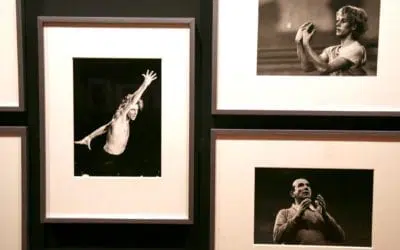 I left The Film School around 2:30 after some late night editing. I’m extremely happy that I can finally say audios to Avid and work with the far superior Final Cut Pro (FCP). However, I’m still a loyal Adobe Premiere fan, and after some footage capture hickups ((For some reason FCP did not want to import the footage from my tapes, so I had to go home, use Premiere to capture my footage, take all the files back to The Film School on an external hard drive, and copy them over.)) yesterday I still stand behind them. Unfortunately, I can’t use Premiere at school, but I’ll settle with FCP.
I left The Film School around 2:30 after some late night editing. I’m extremely happy that I can finally say audios to Avid and work with the far superior Final Cut Pro (FCP). However, I’m still a loyal Adobe Premiere fan, and after some footage capture hickups ((For some reason FCP did not want to import the footage from my tapes, so I had to go home, use Premiere to capture my footage, take all the files back to The Film School on an external hard drive, and copy them over.)) yesterday I still stand behind them. Unfortunately, I can’t use Premiere at school, but I’ll settle with FCP.
My main hurdle right now is what story do I want to tell about Cubicles? Organizing my clips from the paper edit, I’ve come up with three concepts: history (how did cubicles start, how do they work today, what’s the future like), psychology (how does working in a small space affect the person, personalization, office size, productivity, etc.) and thought (compare how much thought people think go into a cubicle to how much actually does, why cubicles are typically gray, productivity, work zones, etc.).
Here are some random notes on things I’ve discovered, how I’m going to solve the problems, and what I need to figure out:
- Make a cut for each idea. This is a fairly obvious point that didn’t occur to me until my teacher mentioned it. With the marvels of non-linear editing I can create as many sequences as I desire. I started with a History Cut, as it was the most straight forward to do, but that lasted for about 30 minutes before I realized this would be putting people to sleep. I then moved on to the Psychology Cut, as I had more categories to put in it. This led me to another aha moment.
- Make a giant assembly cut. This cut is so massive and messy it isn’t even worthy of being called a first cut. The Psychology Cut used a lot of material from the various categories I created, but I still had a few left over, so I copied the sequence and made a new Assembly Cut, adding on all the other categories that weren’t used. Maybe if I would actually read what I write I’d realize that this ties into my idea of the editing process being like an inverted pyramid. All my footage is laid out on the timeline, so for each subsequent cut and idea I want to try out, I just duplicate this sequence and edit it down.
- Shitty First Drafts. I was reading Anne Lamott’s Bird by Bird while my footage was importing when I rediscovered this chapter that was given to me during my first college English class. I’m actually not a big fan of the chapter, but the title alone is worthy enough to mention. I just have to keep telling myself that the first cut will suck, but it gets better from there. I have to let go and not focus on perfecting every edit the first time around.
- Find the core. I’m also reading Chip Heath and Dan Heath’s Made to Stick. It’s meant for businesses but the ideas can easily be applied to other areas, like editing a documentary. So far I’ve gotten through the first chapter on simplicity. I have to find the core idea and stick to it, no matter what. Will I focus on psychology or thought? Once I figure that out, the core idea will dictate what stays and what goes. If it’s great material but it doesn’t contribute to my documentary’s main idea, sorry, but it’s got to go ((I’ve got a plan for good stuff that gets cut that I’ll talk about when I actually have a completed film)).
So this is what I’ve discovered so far. Time to go in and make my shitty first cut.


